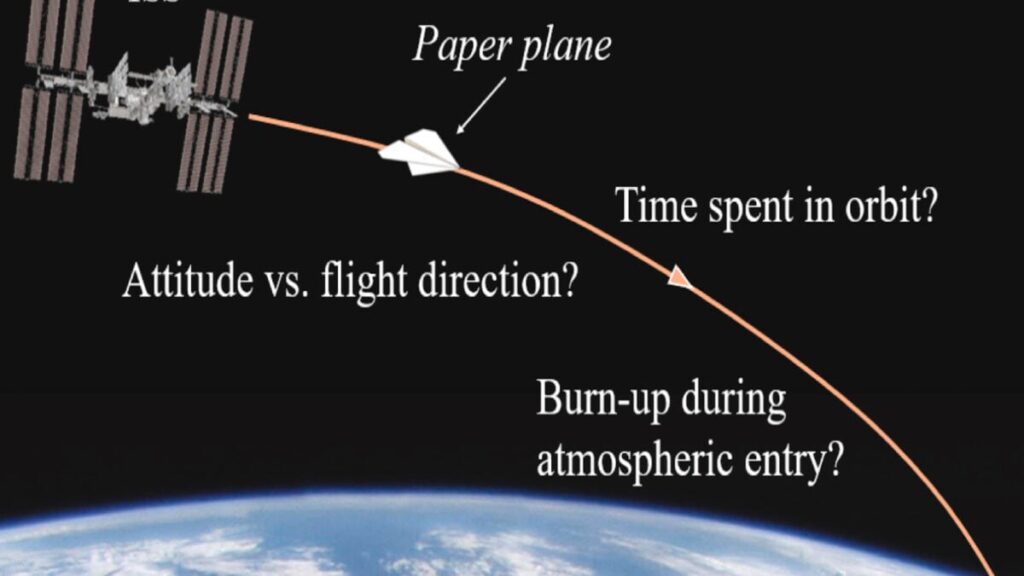A team from the University of Tokyo has explored the feasibility of using origami and paper materials to create spacecraft, addressing the growing problem of space debris in low Earth orbit. Their research, published in Acta Astronautica, simulated a paper plane launched from the International Space Station (ISS) to determine its ability to survive atmospheric reentry. The researchers propose that, unlike traditional metal spacecraft that leave harmful particles upon reentry, paper-based vehicles would burn up harmlessly, minimizing environmental impact.
Using a simulation, they fired a paper plane from the ISS at a speed of 17,448 mph and found that it remained stable until about 74 miles above Earth, where it began to tumble due to aerodynamic forces. Physical tests in wind tunnels showed that while the paper plane’s nose and wings experienced damage at Mach 7 speeds, it did not completely disintegrate, suggesting potential for future designs.
Despite challenges, such as low radar visibility and sensitivity to aerodynamic drag, the researchers believe paper spacecraft could be effective for short, low-cost missions, such as passive probes for measuring air density. The concept allows for multiple deployments, offering a sustainable alternative to traditional metal spacecraft and the associated debris they generate.
Source link


